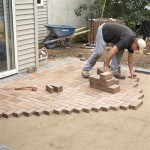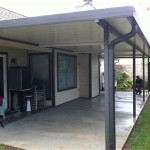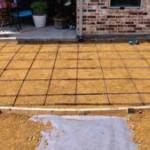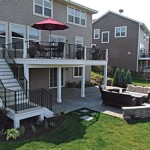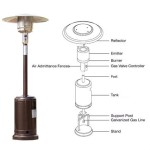Mosaic Patio Heater Won't Stay Lit: Troubleshooting and Solutions
Patio heaters extend the usability of outdoor spaces, providing warmth and comfort during cooler seasons. The Mosaic patio heater, a popular choice for its design and functionality, can occasionally experience issues where it fails to stay lit. This article aims to provide a comprehensive guide to identifying the potential causes of this problem and offering practical solutions to restore the heater's proper operation. Understanding the underlying mechanisms and performing systematic troubleshooting are crucial for effectively resolving the issue.
The failure of a Mosaic patio heater to stay lit can stem from a variety of factors, ranging from minor maintenance issues to more complex component malfunctions. These factors can be broadly categorized into problems with the gas supply, issues with the ignition system, and malfunctions related to safety features. A methodical approach is necessary to diagnose the specific cause in each instance.
Gas Supply Issues
An adequate and consistent gas supply is paramount for the proper functioning of any gas-powered appliance, including patio heaters. Problems with the gas supply are a primary suspect when a Mosaic patio heater fails to stay lit. Several aspects of the gas supply chain need to be examined systematically.
First, the propane tank itself should be checked. Ensure that the tank is not empty or nearing empty. A low gas level can cause inconsistent flame and eventual flameout. A simple way to determine the gas level is by lifting the tank; a noticeably lighter tank suggests a low gas supply. If the tank is low, replace it with a full one.
Next, inspect the tank’s regulator. The regulator is responsible for maintaining a consistent gas pressure to the heater. A faulty regulator can impede gas flow, leading to the heater failing to stay lit. Look for signs of damage, such as cracks or leaks. A hissing sound emanating from the regulator is a telltale sign of a leak. If the regulator is suspected to be faulty, it should be replaced by a qualified technician.
The gas hose connecting the tank to the heater is another potential source of problems. Inspect the hose for kinks, cracks, or any other visible damage. Kinks can restrict gas flow, while cracks can cause leaks. If any damage is found, the hose should be replaced immediately. It is crucial to use a hose specifically designed for propane gas to ensure safety and proper performance.
Another potential issue within the gas supply system involves the internal gas lines of the heater itself. These lines can become clogged over time with debris or rust, restricting gas flow to the burner. While inspecting these lines requires some disassembly of the heater, it is a worthwhile step if other gas supply issues have been ruled out. Clean the lines carefully with compressed air or a small brush to remove any obstructions.
Finally, ensure that the gas valve is fully open. Some patio heaters have a gas valve that can be adjusted to control the flame height. If the valve is not fully open, it may not provide sufficient gas flow to sustain the flame. Verify that the valve is in the fully open position before attempting to light the heater.
Ignition System Malfunctions
The ignition system is responsible for initiating the combustion process. If the ignition system is not functioning correctly, the heater may light initially but fail to stay lit, or it may not light at all. The ignition system typically consists of a spark generator, an igniter electrode, and a thermocouple or flame sensor.
The spark generator creates the electrical spark that ignites the gas. Check the spark generator for proper operation. Most modern patio heaters utilize a piezoelectric igniter, which generates a spark when a button is pressed. If the spark generator is not producing a spark, it may need to be replaced. Battery-powered spark generators also exist; ensure that the batteries are fresh and properly installed.
The igniter electrode is the component that delivers the spark to the burner. Inspect the electrode for damage or corrosion. A corroded or damaged electrode may not be able to effectively deliver the spark, preventing ignition. Clean the electrode with a wire brush to remove any corrosion. Also, ensure that the electrode is properly positioned near the burner. The ideal distance between the electrode and the burner is typically specified in the heater's user manual.
The thermocouple or flame sensor is a safety device that detects the presence of a flame. If the thermocouple does not detect a flame, it will shut off the gas supply to prevent unburnt gas from accumulating. A faulty thermocouple can cause the heater to light briefly and then shut off. To test the thermocouple, light the heater and hold the control knob down for an extended period (typically 20-30 seconds). If the heater stays lit while the knob is held down but shuts off when the knob is released, the thermocouple is likely faulty and needs to be replaced.
In some cases, the wiring connecting the various components of the ignition system can be damaged or disconnected. Inspect the wiring for any signs of damage, such as fraying or corrosion. Ensure that all connections are secure. Loose or damaged wiring can disrupt the flow of electricity, preventing the ignition system from functioning correctly.
Another contributing factor could be a dirty burner. Over time, dust, debris, and spiderwebs can accumulate in the burner, obstructing the flow of gas and air. This can lead to incomplete combustion and flame instability. Clean the burner with a wire brush or compressed air to remove any obstructions.
Safety Feature Interference
Patio heaters are equipped with several safety features designed to prevent accidents. While these features are essential for safety, they can sometimes interfere with the heater's operation and cause it to fail to stay lit. One common safety feature is a tip-over switch, which shuts off the gas supply if the heater is accidentally knocked over.
Ensure that the heater is placed on a level surface. If the heater is tilted or unstable, the tip-over switch may be activated, causing the heater to shut off. Adjust the heater's position until it is stable and level.
Another safety feature found in some patio heaters is an oxygen depletion sensor (ODS). The ODS monitors the oxygen levels in the surrounding air. If the oxygen level drops below a certain threshold, the ODS will shut off the gas supply to prevent carbon monoxide poisoning. If the heater is being used in a poorly ventilated area, the ODS may be activated, causing the heater to shut off. Move the heater to a well-ventilated area to ensure that the ODS does not interfere with its operation.
The pilot light assembly, though related to ignition, also contributes to safety and flame stability. If the pilot light is weak or obstructed, it may not be able to properly ignite the main burner, leading to flameout. Clean the pilot light orifice with a small needle or wire to remove any obstructions. Adjust the pilot light if necessary, following the instructions in the heater's user manual. A properly adjusted pilot light should be a steady blue flame.
Furthermore, ensure that the heater is properly assembled. Loose or missing components can compromise the heater's structural integrity and safety. Refer to the heater's user manual to verify that all components are properly installed and secured.
Addressing a Mosaic patio heater that won't stay lit requires methodical troubleshooting of the gas supply, ignition system, and safety features. By systematically examining each potential cause and implementing the suggested solutions, the heater’s optimal functionality can be restored.

Troubleshooting Az Patio Heaters And Replacement Parts

Patio Heater Won T Stay Lit Here S How To Fix It

Troubleshooting Az Patio Heaters And Replacement Parts

Troubleshooting Az Patio Heaters And Replacement Parts

Troubleshooting Az Patio Heaters And Replacement Parts

Troubleshooting Az Patio Heaters And Replacement Parts

Patio Heater Pilot Light Won T Stay Lit Diy Thermocouple Cleaning

Patio Heater Pilot Light Won T Stay Lit Diy Thermocouple Cleaning

Patio Heater Pilot Light Won T Stay Lit Diy Thermocouple Cleaning

Patio Heater Won T Stay Lit Here S How To Fix It
Related Posts


